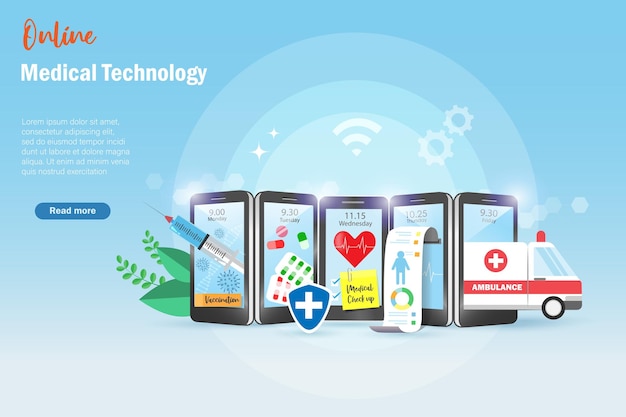Discover the Perks of Subscription Based Healthcare for Affordable Medical Care
Discover the Perks of Subscription Based Healthcare for Affordable Medical Care
Blog Article
Comprehending the Cost-Effectiveness of Subscription-Based Health Care Designs
As the health care landscape advances, subscription-based versions arise as a compelling choice, guaranteeing to redefine just how individuals handle medical expenses. Reviewing these models' cost-effectiveness demands a nuanced comparison with typical insurance coverage, considering both economic implications and patient contentment.
Introduction of Subscription-Based Models
Subscription-based health care models, often described as direct main treatment or attendant medication, are progressively getting attention as a potential solution to inefficiencies within typical health care systems. These designs operate the principle of offering individuals direct access to healthcare companies via a monthly or yearly charge, bypassing the requirement for traditional insurance coverage systems. This setup aims to simplify patient-provider communications by decreasing administrative problems, which frequently prevent timely and individualized treatment.
At the core of subscription-based versions is the emphasis on a much more personalized client experience. Individuals take advantage of enhanced access to their doctors, usually consisting of next-day or same-day visits, expanded consultation times, and straight communication networks such as phone or video phone calls. This version fosters an aggressive technique to health care, where clients and providers can collaboratively concentrate on preventative care and persistent condition monitoring.

Cost Comparison With Conventional Insurance Policy

One of the primary monetary advantages of registration versions is openness in expenses. Alternatively, typical insurance policy might be much more useful for people needing specialized care or costly therapies not covered under a registration model, as they benefit from the more comprehensive insurance coverage network and cost-sharing systems.
Nevertheless, cost-effectiveness is context-dependent. While membership versions might use savings for those primarily needing key care, people with chronic problems or specialized healthcare needs may find standard insurance much more extensive. For that reason, evaluating specific health care needs and prospective usage is important in figuring out one of the most cost-effective choice for people.
Influence on Client Complete Satisfaction
Person fulfillment within subscription-based medical care designs typically reflects a substantial renovation over traditional insurance systems. This improvement is mainly credited to the customized care and availability these designs provide. Individuals regularly report greater contentment because of decreased delay times and the convenience of scheduling visits. Unlike conventional systems, where individuals may experience hold-ups in receiving care, subscription-based models make certain even more timely and straight communications with health care providers.
Furthermore, the openness in expenses related to subscription-based medical care minimizes the usual aggravations connected to unanticipated costs and complex payment processes seen in traditional insurance (subscription based healthcare). Patients value knowing the exact economic commitment upfront, resulting in enhanced depend on and confidence in their health care administration
Additionally, the emphasis on preventive care and wellness in subscription versions adds to improved wellness results, better enhancing patient contentment. By focusing on continuous health care instead than anecdotal care, clients experience a more constant and all natural medical care journey.
In addition, the enhanced provider-patient connection promoted in these designs, identified by more time spent per individual and tailored interest, plays a crucial function in elevating person contentment levels, as patients feel truly cared for and recognized.
Carrier Viewpoints and Experiences
From the company's perspective, subscription-based healthcare versions use a transformative strategy to providing medical services. These models stress a preventative and aggressive health care method, permitting companies to focus on thorough patient treatment without the restraints of conventional fee-for-service arrangements (subscription based healthcare). This change in focus typically causes improved individual results and boosted provider satisfaction, as healthcare experts can allocate even more time and sources to client involvement and personalized treatment strategies
Furthermore, registration models facilitate predictable earnings streams, which boost monetary security for doctor. This predictability allows for enhanced source planning and allotment, adding to an extra reliable health care delivery system. Service providers can buy personnel training, technology, and facilities enhancements, therefore improving the high quality of treatment provided.
Nonetheless, the transition to subscription-based versions is not without difficulties. Regardless of these obstacles, several suppliers find that the benefits of raised client communication and streamlined procedures outweigh the first difficulties, making subscription-based models an appealing option.
Future Leads and Challenges

A key obstacle is regulative compliance, as subscription designs must follow advancing healthcare plans and insurance policy demands. This requires continuous adjustment and advancement to make certain positioning with lawful requirements. In addition, integrating these designs right into existing health care frameworks can be intricate, needing substantial investments in innovation and training.
There is also the prospective threat of creating injustices in healthcare gain access to, as subscription versions may favor those that can afford them, leaving vulnerable populations underserved. Resolving this requires thoughtful factor to consider of pricing approaches and aid systems to make certain inclusivity.
Verdict
Subscription-based medical care designs present a viable choice to conventional view it now insurance by using monetary predictability and transparency, particularly profiting individuals with chronic problems or constant medical care demands. The cost-effectiveness of these designs is contingent upon private medical care use patterns and circumstances.
Subscription-based healthcare versions, occasionally referred to as straight key treatment or concierge medication, are progressively getting interest as a potential service to inefficiencies within traditional healthcare systems. Unlike traditional systems, where individuals might experience hold-ups in getting care, subscription-based models ensure even more timely and direct communications with medical care carriers.
These designs highlight a preventative and aggressive medical care technique, allowing providers to concentrate on extensive have a peek at this site patient care without the restraints of traditional fee-for-service plans. As these models continue to obtain grip, they offer the potential to revolutionize individual access to care, simplify service delivery, and enhance healthcare costs.Subscription-based healthcare versions present a sensible option to traditional insurance coverage by offering monetary predictability and transparency, especially profiting people with persistent conditions or constant healthcare requirements.
Report this page